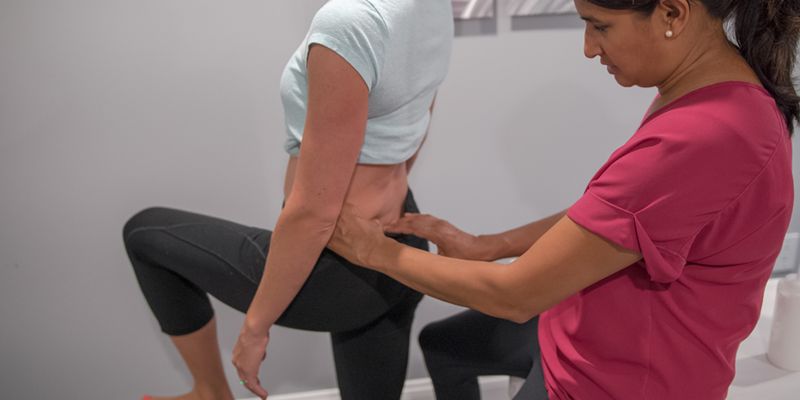
That winter wonderland outside our windows may look beautiful, but it can put us all at a higher risk for slips and falls! Many of our wintertime activities, whether they be everyday outdoor chores, exercise or leisure activities, can put strain or cause injury to our tailbones more frequently than we realize! Tailbone injuries occur most often in winter when we are skiing or snowboarding, shoveling up the snow outside of our homes or simply walking in wintry weather. It’s easy for one misstep to send us sliding backwards, causing possible breaks, strains or fractures of the tailbone. If you’ve fallen recently and are experiencing pain in the lower back or buttocks and it has not resolved, then the tailbone could be a true source of the pain. This pain greatly impacts our ability to sit for long periods, have a bowel movement or even bend forward. It can really affect important parts of our daily lives like driving or working at a desk.
We don’t necessarily have to break our tailbone to be affected by pain in the region of the tailbone (also known as the coccyx) and sacrum (a triangular bone of the lower back that is situated in the pelvis between the hipbones). When we fall and experience a blow to the lower back, the muscles that connect to the tailbone and sacrum can become strained and irritated, causing spasms that mimic the pain of a break. This pain can be felt in the pelvis, perineum, scrotum and hips, where it also causes uncomfortable tightness. Because the pelvis and tailbone work together to connect the spine with the legs, they are crucial in providing balance and stability while standing, walking, running and sitting. In fact, when we stand on both feet, up to 65% of our weight shifts down the spine and onto the top of the tailbone area. The tailbone and pelvis are reinforced by many muscles and ligaments that can become irritated or injured during a fall, so it is easy to see how even a little bit of tenderness after a fall can become more severe with simple movement. To get a bit of relief on your own between physical therapy sessions, lie on your back and relax your buttocks while imagining a triangle with points at your pubic bone and each of your sitz bones. Next, relax the sitz bones as you imagine the triangle widening. Breathe deeply as you imagine your pubic bone slowly moving towards your navel. This should help to ease pain as well as loosen up the core muscles associated with the pelvis and tailbone.
To steer clear of tailbone injuries altogether this winter, it may sound simple, but taking precautions is key. Always be sure to look where you are going in slippery conditions since you never know where a patch of black ice could be hidden. You don’t need to hit the slopes to take a spill; this could happen during a quick walk in the snow! To avoid slipping, always wear weather appropriate footwear, even if you are not planning on walking a long distance. The best type of footwear for snow and ice should have rubber or neoprene composite soles for good traction. Rubber or plastic soles can’t help your feet get as good of a grip on the icy ground.
If your low back, buttock or tailbone pain has not resolved then it might be time to get it evaluated. Contact us to get treated by one of our experts in treating this region so you can safely get back out into that winter wonderland!
In-Person and Online Consultations


